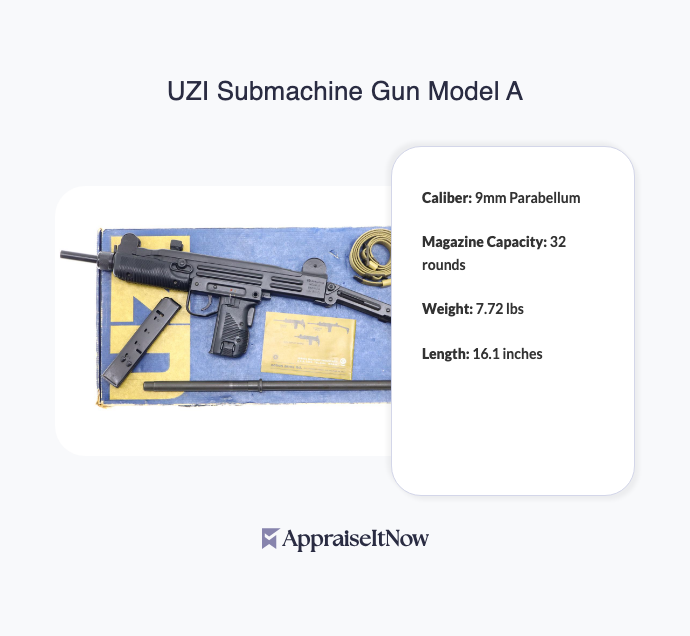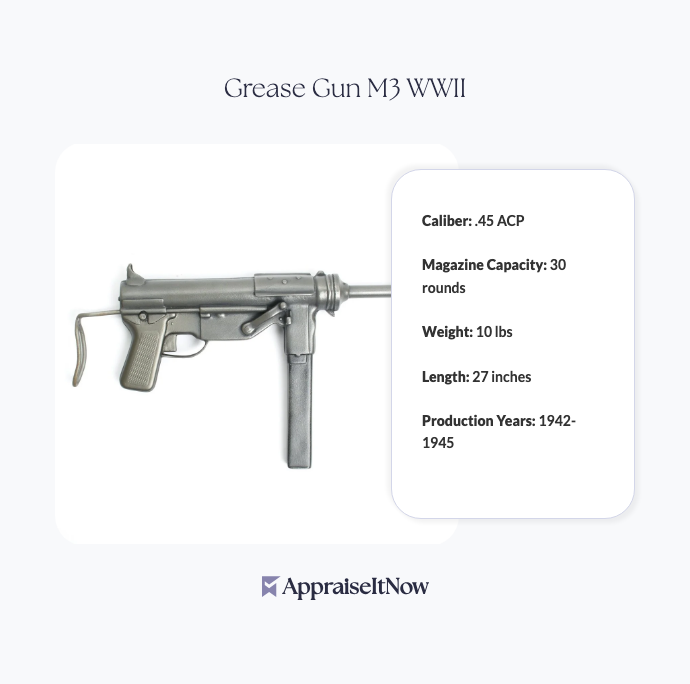<h1>How to Get Your Springfield Model 1861 Musket Appraised</h1>
<p>The Springfield Model 1861 musket stands as one of the most historically significant firearms in American history, commanding strong collector interest and valuations between <strong>$3,000 and $4,000</strong> for well-preserved examples. Whether you've inherited a family heirloom, discovered one in an estate sale, or are considering a purchase, understanding how to properly appraise this iconic Civil War-era weapon ensures you make informed decisions about buying, selling, or insuring your piece of American military heritage.</p>
<h2>Understanding Your Springfield Model 1861's Historical Value</h2>
<p>Your Springfield Model 1861 musket holds significance far beyond its mechanical function. Adopted in 1861 and serving as the standard infantry weapon of the Union Army throughout the Civil War, this rifle-musket played a pivotal role in some of history's most consequential battles. With over 1 million units produced, the Model 1861 became synonymous with the conflict itself, making it one of the most recognizable firearms from the nineteenth century.</p>
<p>The model earned its reputation through exceptional reliability and accuracy in trained hands. Featuring a .58 caliber bore, a 40-inch barrel, and a sturdy walnut stock, the Model 1861 delivered consistent performance across diverse battlefield conditions. These technical specifications remain important today because collectors specifically seek examples that retain these original specifications and materials—a direct link to the soldiers who carried them.</p>
<div class="callout tip"><p><strong>Historical Context</strong></p>
<p>The Springfield Model 1861 wasn't merely a weapon; it represented industrial capability and military standardization. Understanding this context helps explain why collectors value authentic, unaltered examples so highly.</p></div>
<h2>Key Specifications That Affect Appraisal Value</h2>
<p>When evaluating a Springfield Model 1861, several technical and condition factors directly impact its appraised value. The rifle-musket's .58 caliber designation refers to the bore diameter, which remains an important identifier for authenticity verification. The 40-inch barrel represents the standardized length that distinguished it from later variations and shorter artillery carbine versions.</p>
<p>The walnut stock construction significantly influences value assessment. Original walnut with appropriate patina, without excessive refinishing or replacement, commands premium pricing. Appraisers examine whether the wood grain, color variations, and wear patterns appear consistent with authentic aging versus artificial restoration. An original Springfield Model 1861 displaying natural use marks and appropriate wood deterioration often holds greater value than one that appears artificially preserved.</p>
<p>Metal components also receive careful scrutiny during professional <a href="/blog/a-beginner-s-guide-to-antique-gun-appraisals">antique gun appraisals</a>. The hammer, lock plate, trigger guard, and ramrod should show appropriate period patination—neither over-polished nor excessively corroded. Manufacturing marks and inspection stamps on the lock plate help verify date of manufacture and arsenal of origin, each factor influencing final valuation.</p>
<h2>Authenticity Verification and Documentation</h2>
<p>Before seeking appraisal, gather any available documentation about your Springfield Model 1861's provenance. Family records indicating military service, original bills of sale, or historical society research can substantially support valuation. Auction house catalogs and previous sales records provide valuable context, especially if your musket appears in historical documentation or has known military unit associations.</p>
<p>Matching serial numbers across the lock plate, barrel, and stock represent a critical authenticity indicator. Appraisers examine whether all components appear original to the piece or show evidence of replacements. A rifle with mismatched parts, common among well-used military weapons, typically appraises lower than a "numbers-matching" example. However, even incomplete or mismatched examples retain significant <a href="/types/memorabilia-and-collectibles">collectible value</a> due to rarity and historical importance.</p>
<p>The question of how many Springfield Model 1861 muskets were manufactured—over 1 million units—sometimes leads collectors to underestimate their worth. While production numbers were substantial, the vast majority have been lost, melted down, or deteriorated beyond preservation. Finding an example in good condition with documented history represents a genuine discovery worth professional evaluation.</p>
<div class="callout note"><p><strong>Authenticity Alert</strong></p>
<p>Reproduction Springfield Model 1861 muskets exist in the modern marketplace. Professional appraisers distinguish authentic period pieces from modern reproductions through detailed examination of construction techniques, material composition, and wear patterns that cannot be accurately replicated.</p></div>
<h2>Current Market Values and Pricing Factors</h2>
<p>The $3,000 to $4,000 valuation range for quality Springfield Model 1861 examples reflects strong collector demand and limited available supply. This pricing positions the Model 1861 favorably compared to other Civil War firearms, particularly when considering <a href="/blog/antique-gun-appraisals-what-you-should-know">what caliber was the Springfield Model 1861</a>—the .58 caliber represents a functionally superior design compared to many contemporary weapons.</p>
<p>Condition grades directly correlate to market value. An example grading "excellent" with 95% original finish, clear markings, and all matching parts approaches the $4,000 upper range. A "very good" specimen showing moderate wear but retaining originality typically appraises toward $3,500. "Good" condition examples with light restoration or minor parts replacement settle around $3,000, while heavily altered pieces may appraise below this range.</p>
<p>Military provenance significantly impacts pricing. A Springfield Model 1861 documented to specific regiments, particularly those present at famous battles, can command 15-25% premiums. Documentation directly linking your musket to historical events adds compelling narrative value that collectors enthusiastically pursue. This mirrors how <a href="/types/sports-memorabilia">sports memorabilia and collectibles</a> valuations increase with verified historical connection.</p>
<h2>Condition Assessment and Grading</h2>
<p>Professional appraisers evaluate Springfield Model 1861 muskets using standardized condition grading systems that assess multiple components. The bore condition receives particular attention—a bright, sharp bore with clear rifling indicates minimal firing, while a heavily pitted bore suggests extensive use during the Civil War era. Interestingly, heavy bore wear doesn't necessarily diminish value if accompanied by excellent exterior condition and strong provenance.</p>
<p>The lock mechanism's functionality matters to appraisers, though they understand many specimens may have frozen or sluggish mechanisms due to age. Original springs that still hold tension, a crisp hammer fall, and smooth trigger function indicate proper maintenance over decades. However, appraisers recognize that age-related mechanical stiffness doesn't necessarily reflect historical use patterns—proper storage conditions preserve function better than harsh environments.</p>
<p>Stock condition requires detailed examination. Original walnut that's aged appropriately, showing realistic cracking consistent with wood shrinkage over 150+ years, maintains value better than examples that appear artificially refinished. Repairs or replacements to the stock reduce value, particularly if replacement components lack historical authenticity. Appraisers photograph these conditions extensively for professional documentation, creating a detailed record for insurance or sales purposes.</p>
<table class='appraisal-table'>
<thead>
<tr>
<th>Condition Grade</th>
<th>Percentage Range</th>
<th>Value Estimate</th>
<th>Key Characteristics</th>
</tr>
</thead>
<tbody>
<tr>
<td>Excellent</td>
<td>95%+</td>
<td>$4,000</td>
<td>Original finish, clear markings, bright bore, matching parts</td>
</tr>
<tr>
<td>Very Good</td>
<td>80-94%</td>
<td>$3,500</td>
<td>Light wear, authentic patina, minor blemishes acceptable</td>
</tr>
<tr>
<td>Good</td>
<td>60-79%</td>
<td>$3,000</td>
<td>Moderate wear, some restoration, functionality intact</td>
</tr>
<tr>
<td>Fair</td>
<td>Below 60%</td>
<td>$2,000-$2,500</td>
<td>Heavy wear, replacements, significant damage</td>
</tr>
</tbody>
</table>
<h2>Selecting the Right Appraisal Professional</h2>
<p>Choosing a qualified professional ensures your Springfield Model 1861 receives accurate, defendable valuation. Look for appraisers holding credentials from recognized organizations like the <strong>American Society of Appraisers (ASA)</strong>, <strong>International Society of Appraisers (ISA)</strong>, or <strong>American Society of Military Uniform Collectors</strong>. These credentials indicate formal training in valuation methodology and <a href="/blog/5-tips-for-getting-the-most-accurate-antique-gun-appraisal">professional appraisal standards</a>.</p>
<p>Your appraiser should demonstrate specific expertise in <a href="/types/antique-gun">antique firearms</a> and Civil War-era collectibles. General appraisers lack the specialized knowledge necessary for authentication and accurate market analysis. Ask potential appraisers about their experience with Springfield Model 1861 specimens specifically, references from satisfied clients, and whether they maintain current knowledge of comparable sales and market trends.</p>
<p>AppraiseItNow connects you with credentialed experts across the U.S. who specialize in <a href="/blog/benefits-of-hiring-an-antique-gun-appraisal-professional">antique gun appraisals</a>, ensuring USPAP-compliant valuations suitable for insurance, estate, or sales purposes. Professional appraisers provide detailed photographic documentation, comprehensive condition assessment, and market analysis that supports your valuation with defensible reasoning.</p>
<h2>Documentation for Insurance and Legal Purposes</h2>
<p>A professional appraisal of your Springfield Model 1861 musket creates essential documentation for insurance coverage. Standard homeowner's policies typically cap firearms coverage at $2,500, leaving your $3,000-$4,000 musket under-insured. A certified appraisal justifies specialized coverage or increased limits, ensuring you receive full replacement value if theft, damage, or loss occurs.</p>
<p>Beyond insurance, documented appraisals prove invaluable for estate planning. If your Springfield Model 1861 forms part of an inheritance or estate distribution, beneficiaries need clear valuation documentation to establish each party's share accurately. Professional appraisals eliminate disputes and provide clear records for tax purposes, particularly important when estates include multiple <a href="/types/antiques">antique collectibles</a>.</p>
<p>Legal proceedings—whether involving divorce settlements, partnership dissolutions, or donation documentation—frequently require professional appraisals as evidence of fair market value. Courts and financial institutions recognize USPAP-compliant appraisals as authoritative valuations, making professional documentation essential for any legal application.</p>
<div class="callout tip"><p><strong>Documentation Strategy</strong></p>
<p>Maintain your appraisal certificate, detailed photographs, and condition reports together with any historical documentation about your Springfield Model 1861. This comprehensive file protects your investment and supports future sales or insurance claims.</p></div>
<h2>Understanding Civil War Musket Market Dynamics</h2>
<p>The broader question of <a href="/blog/what-to-look-for-when-appraising-an-antique-gun">how much is a Civil War musket worth</a> depends on specific model, condition, and provenance, with Springfield Model 1861 examples representing the premium tier. While reproduction muskets or heavily altered examples might appraise between $1,000-$2,000, authentic, well-preserved Model 1861 specimens command $3,000+ due to superior production quality and historical significance.</p>
<p>Collector demand remains strong for Civil War-era firearms, particularly Union-issue weapons like the Springfield Model 1861. This sustained interest, combined with the finite supply of surviving specimens, supports stable or appreciating valuations over time. Unlike some antique firearms experiencing market softening, Civil War collectibles maintain robust demand from both individual collectors and institutions seeking museum-quality pieces.</p>
<p>The rarest Civil War firearms—certain carbine variants, experimental models, or specimens with exceptional battle-related provenance—command substantially higher prices. However, the standard Springfield Model 1861 offers accessibility for collectors while retaining solid investment characteristics. Understanding whether your specific musket represents a standard production variant or a scarce configuration requires professional expertise that appraisers provide.</p>
<h2>Preservation and Value Maintenance</h2>
<p>Proper storage directly affects your Springfield Model 1861's long-term value retention. Maintain the musket in a climate-controlled environment, ideally between 50-70°F with 45-50% humidity. Fluctuating temperatures and moisture create rust and wood deterioration that significantly impact condition and appraisal value. Secure storage in a gun safe or display case prevents theft while protecting from dust and environmental contamination.</p>
<p>Avoid over-cleaning or restoration attempts. Many well-intentioned owners inadvertently reduce value by "improving" appearance through polishing, refinishing, or replacing components. Leave any restoration work to specialists experienced in <a href="/blog/common-mistakes-to-avoid-when-getting-an-antique-gun-appraisal">antique firearms conservation</a>. Original patina, even if visually less pristine than artificially restored finishes, typically commands higher valuations among knowledgeable collectors.</p>
<p>Regular inspection for deterioration—particularly rust development on metal surfaces or wood cracking—allows you to address problems before they become severe. Light oiling of metal components annually maintains protection without requiring restoration. Documentation through photography of your musket's condition over time creates a valuable record supporting future appraisals and insurance claims.</p>
<h2>Legal Considerations for Ownership and Transfer</h2>
<p>Before finalizing any appraisal or contemplating sale, understand that <a href="/blog/what-to-look-for-when-appraising-an-antique-gun">can you legally own a musket</a> depends on your jurisdiction and the specific firearm's configuration. Most states classify pre-1898 muzzle-loading muskets like the Springfield Model 1861 as antiques, exempt from standard firearms licensing requirements. However, local regulations vary significantly, so verify your specific situation with local law enforcement or a firearms attorney.</p>
<p>If your Springfield Model 1861 has been modified to fire metallic cartridges rather than retaining its original muzzle-loading design, federal classification changes and regulations become more restrictive. Professional appraisers assess whether your specimen maintains original configuration, an important factor for both legal compliance and market value. This distinction directly impacts your ability to own, sell, or transport the firearm across state lines.</p>
<div class="callout note"><p><strong>Key Takeaway</strong></p>
<p>A professional appraisal of your Springfield Model 1861 musket provides accurate valuation ($3,000-$4,000 range), essential documentation for insurance and legal purposes, and expert authentication confirming your Civil War-era firearm's authenticity and historical significance. Whether you're protecting an inheritance, planning an estate, or considering sale, certified appraisal expertise ensures informed decisions about this iconic American military treasure.</p></div>







.avif)







